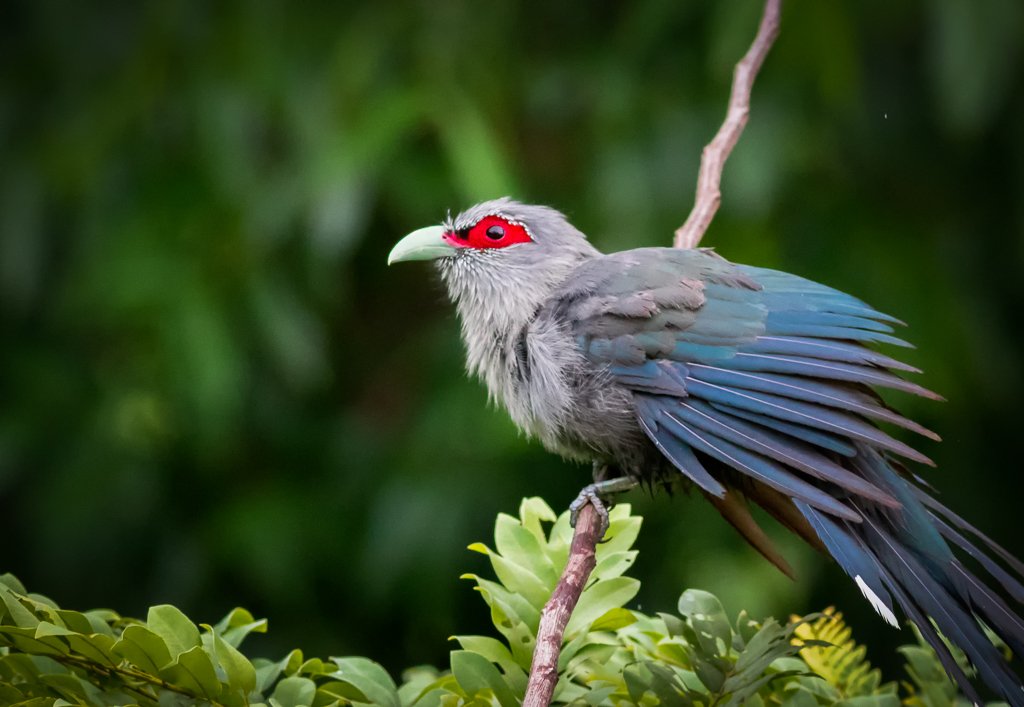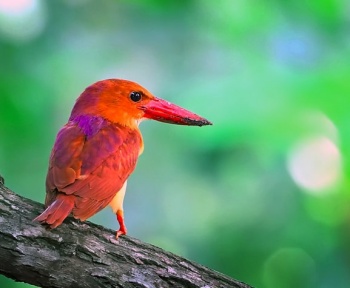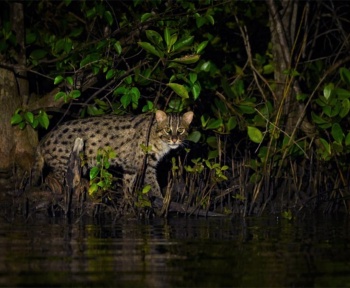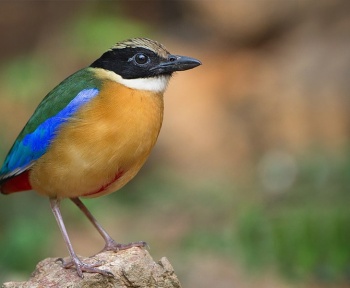Sundarban National park, the best tiger reserve in India, has the largest mangrove forest ecosystem globally.
The national park has the most comprehensive range of flora and fauna all over the world. We can see a huge variety of both plants and animal species.
Although due to global warming and drastic climate changes, we have seen that many species are becoming endangered, some are even extinct, and some are just left with some traces of them. In your Sundarban Wildlife tour, you can get to witness numerous rare flora and fauna.
Malkoha! A Green-billed adorable and unique species of bird can be seen in the Sundarban National Park.
They are primarily found in dry scrub and thin forests; Sundarban is one of them. The texture of the Malkoha is waxy bluish-black, and the Green bill is curved and prominent. There also exist a long graduated tail and white tips to the tail feathers. The scientific name of the bird is PHAENICOPHAEUS.
Malkoha is found in the Sundarban National Park almost throughout the year. People visiting the famous national park can see the Green-billed Malkoha and explore the biodiversity of the park.
The green-billed Malkoha is a species of a non-parasite cuckoo, and the bill of the bird is curved.
The green Malkoha weighs around 100-130 grams and is about 50-60 cm in length.
The breeding place is Primary forest, dense thickets, rubber plantations, scrub, and cultivated areas across the Indian subcontinent and Southeast Asia.
You can spot this bird in Sundarbans wildlife photography tour in the areas of Sundarban like Sarakkhali, Sudhanyakhali, Matla 1, Sajnekhali, Deoalbharani, and Netidhopani.
The bird’s primary food is gleaned from trees, looking for caterpillars, crickets, and grasshoppers. It also eats small lizards and eggs of birds. They also have some weird habits in their behavior. It makes its way through the foliage, checking all possibilities, creeping like a squirrel before making a hop or gliding onto the next tree. Sometimes we can also see the Green-billed cuckoo hawking insects in mid-air. It searches its food behind the leaves or hiding somewhere and grasps the food instantly, sometimes leaving the bird in a very awkward position.
In India, we can see the Green-billed Malkoha in Uttrakhand, Uttar Pradesh, West Bengal, Andhra Pradesh, Maharashtra, Chattisgarh, Madhya Pradesh, Odisha, and parts of North East India. The green-billed Malkoha can be seen in dense scrub and cultivated areas in foothill forests, lowland, and forest edges.
We can see the breeding season of the green-billed Malkoha from April to august to India. The laying season of this bird is in Nepal in May. And the breeding season of Malkhoa is in the peninsular region of Malaysia from January to March. These birds are species that are monogamous. Their nesting sites comprise thorny scrubs and bushes situated at the height of 2 meters above the ground. It is a heavily built saucer made from rootlets and twigs. It is usually lined with leaves. The typical clutch contains two eggs. Also, these birds are Nonmigrant resident birds. The nature of the birds is that they make local movements for feeding and breeding within their range.
Also, The IUCN (International Union for Conservation of Nature) has categorized and evaluated the Malkoha species and has listed it as of “Least Concern.”
The Malkoha (Phaenicophaeustristis) does not approach the thresholds for being Vulnerable under the range size criterion or the population trend criterion, or the population size criterion. Throughout its range, this malkoha species is reported to be common to very common. The generation length is 4.2 years. Its distribution size is around 11,400,000 sq.km.
Sundarban National Park has vast biodiversity in the birds, and extensive species of the birds around 428 can be seen. Some are rare; some are becoming rare with the climatic conditions. There is enormous biodiversity with many flora and fauna to attract the Wildlife Photographers and the people visiting the Best Tiger Reserve in India, THE SUNDARBANS.
Apart from Malkhoa, Sundarban is also the best place to spot the royal Bengal tiger, Irrawaddy Dolphin, and the estuarine crocodiles. These species are scarce to find in any other tiger safari in India. And for this, several enthusiast wildlife photographers visit this national park to see these rare animals.
Thus, to raise awareness about wildlife conservation issues and inspire numerous actions that support wildlife conservation, wildlife photography is the best effective method. It is an effective medium for the storyteller to narrate people about the things they have witnessed through their lenses.
Therefore, if you are also an enthusiast about wildlife photography and want to explore the lush green biodiversity and capture a beautiful picture of this biodiversity through your lenses, then the Sundarban wildlife photography tour is a must-visit thing for you. Get ready with backpacks and lenses to explore the Sundarbans to the fullest and capture the rare moments through your lenses while on your wildlife tour in Sundarban.




